Introduction
If you’re looking to get a hamster, you’ll want to know which breeds are best. Hamsters come in all shapes, sizes, colors, and temperaments. They’re an incredibly diverse species and can be a lot of fun for kids (and adults) alike.
But with so many different types of hamsters out there, how do you know which one is right for you? Here’s some information that should help you decide what type of hamster is best for your family!
#1 – Syrian Hamsters

Starting us off at #1 are the Syrian Hamsters — the most popular breed of hamster in America and Europe. They’re large and fluffy with long tails and big ears. They usually have a lifespan of 3-4 years if properly cared for by their owner. Syrian hamsters are nocturnal animals who sleep during the day and come out at night when they feel safe enough to do so (usually after everyone in the house has gone to bed). Syrian hamsters love running on exercise wheels and playing with toys that they can chew on. Their diet includes things like apples, carrots, broccoli stalks, watermelon rinds, and more. They also love to eat healthy treats like hamster yogurt drops or applesauce!
Syrian hamsters are social animals who need their own space (like a cage) where they can play together and get along. If they’re lonely, they may develop behavioral problems such as biting or plucking their fur out.
Behavior
Syrian hamsters are generally solitary animals and can be quite territorial. They prefer living alone and can become aggressive if housed with other hamsters. However, they are usually friendly and docile towards their human caretakers, making them a popular choice as pets.
Diet & Feeding Requirements
The Syrian hamster is an avid eater, and loves to pick through its food. It will eat anything from fruits and vegetables to grains and nuts, as well as many types of dog food (Some owners swear that their Syrian hamsters eat their dog’s treats). The Syrian hamster also likes to drink water from a bowl, so make sure you provide one for them.
Make sure they get a balanced diet of commercial hamster pellets, fresh vegetables, fruits, and occasional treats like mealworms.
Health
Syrian hamsters are generally healthy animals but can be prone to common hamster ailments like wet tail, respiratory infections, and dental issues. Regular check-ups with a veterinarian and proper care can help prevent these issues.
Suitability Around Kids
Syrian hamsters are a good choice for families with children, as they are usually docile and easy to handle. However, adult supervision is necessary to ensure proper handling and prevent any accidents or injuries.
Ease of Ownership
Caring for a Syrian hamster is relatively simple, making them suitable for first-time hamster owners. They require a spacious cage, a balanced diet, and regular cleaning to maintain a healthy environment.
We gave the Syrian hamster a 9/10 rating because they are generally friendly and docile, making them a popular choice for families with children. They are easy to care for and suitable for first-time hamster owners. However, their solitary nature and potential health issues knocks them down from a perfect 10.
#2 – Campbell’s Dwarf Hamster

The Campbell’s Dwarf Hamster is a small, short-haired hamster that is native to southern Russia and northern Kazakhstan. It has an average lifespan of 2-3 years, but it can live longer if properly cared for.
Because they’re so small, they require a lot less space than other hamsters. They like to burrow into soft bedding and chew on wood and cardboard, which can make them destructive in their habitat if they’re not given enough toys and accessories. They also need a lot of socialization when they’re young so they don’t become introverted as adults.
Behavior
The Campbell Dwarf hamsters are social animals and can live in pairs or small groups if introduced at a young age. They are generally friendly and active, making them an entertaining pet to have.
Diet & Feeding Requirements
This hamster surely loves to eat. Their diet consists of a variety of different food types, including healthy fruits and vegetables, grains, seeds, nuts and insects. They enjoy eating carrots, cornmeal and sunflower seeds as treats as well as lettuce leaves and other greens. To ensure that your hamster stays healthy, it’s important to make sure they have a balanced diet. Portion control is essential though, as they can be prone to obesity.
Health
This hamster is generally healthy but can develop diabetes if their diet is too high in sugar. Regular trips to the vet and a balanced diet can help prevent this.
Suitability Around Kids
These hamsters are good for families with children, but your kids may have trouble handling them. Make sure an adult is around during interactions.
Ease of Ownership
Campbell’s Dwarf hamsters are relatively easy to care for but may require more attention due to their social nature and potential health concerns.
The Dwarfs received an 8/10 rating due to their social nature, friendly behavior, and relatively low health issues. However, their small size and potential health concerns, such as diabetes, lower their rating when compared to the Syrian hamster.
#3 – Winter White Dwarf Hamster
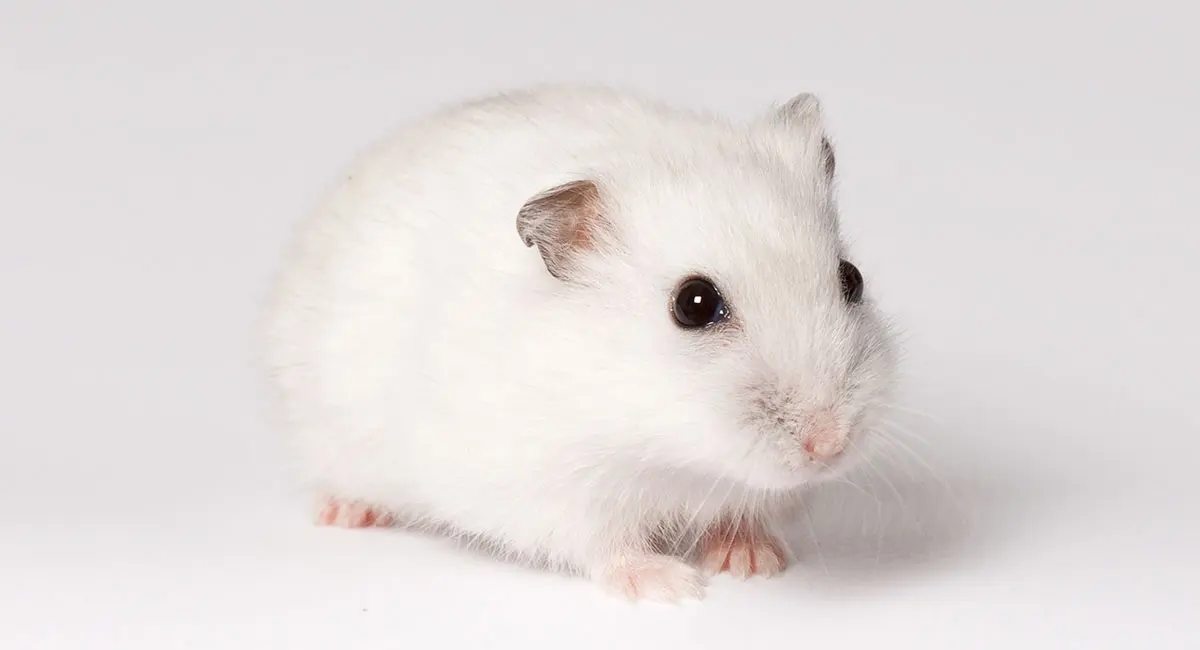
The Winter White Dwarf Hamster, also known as the Russian Dwarf Hamster or Djungarian Hamster, is a small and adorable breed of hamster that is popular among pet owners. They have a short stocky body, small ears, and a short tail. One of the unique features of this breed is their ability to change coat color in response to seasonal changes, turning from a grayish-brown color in the summer to a white coat in the winter months. This color-changing ability helps them camouflage in their natural habitat.
Behavior
Winter White Dwarf Hamsters are known for their friendly and social behavior, making them a popular choice for pet owners. They can be tamed and become quite affectionate with their owners. However, remember that each hamster has its own unique personality, and some may be more timid or skittish than others.
Unlike Syrian hamsters, Winter White Dwarf Hamsters can live in pairs or small groups of the same sex, as they are more sociable and less territorial. It is recommended to introduce them to each other (if you’re going to put them in a group) at a young age, and track their interactions to make sure they get along well and avoid potential aggression or fights.
Diet & Feeding Requirements
A balanced diet is essential for the health and well-being of a Winter White Dwarf Hamster. Their diet should primarily consist of high-quality commercial hamster pellets or seed mixes specifically designed for dwarf hamsters. These pellets or seed mixes will provide the necessary nutrients, vitamins, and minerals for their overall health.
In addition to commercial food, Winter White Dwarf Hamsters enjoy a variety of fresh fruits and vegetables, such as small pieces of apple, carrot, broccoli, spinach, and cucumber. However, it’s essential to introduce these fresh foods gradually and in moderation to avoid upsetting their digestive system.
Health
Winter White Dwarf Hamsters can experience various health issues during their lifespan. Common health concerns include wet tail, respiratory infections, dental issues, skin conditions, tumors, and obesity. To maintain their health properly, provide them with a clean and safe environment, balanced diet, and regular exercise. Monitoring your hamster’s health and behavior can also help identify any issues early on, and don’t forget to consult your vet when needed.
Suitability Around Kids
Winter White Dwarf hamsters are a good choice for families with children, as they are generally friendly and easy to handle. Adult supervision is still necessary for proper handling and care.
Ease of Ownership
Caring for a Winter White Dwarf hamster is relatively simple, making them suitable for first-time hamster owners. They require a spacious cage, a balanced diet, and regular cleaning to maintain a healthy environment.
The Winter White Dwarf hamsters received a 7/10 rating because they are social, friendly, and easygoing, making them a popular choice for families with children. They are relatively easy to care for, but their potential health issues and need for a spacious cage skews their rating a bit.
#4- Roborovski Hamster
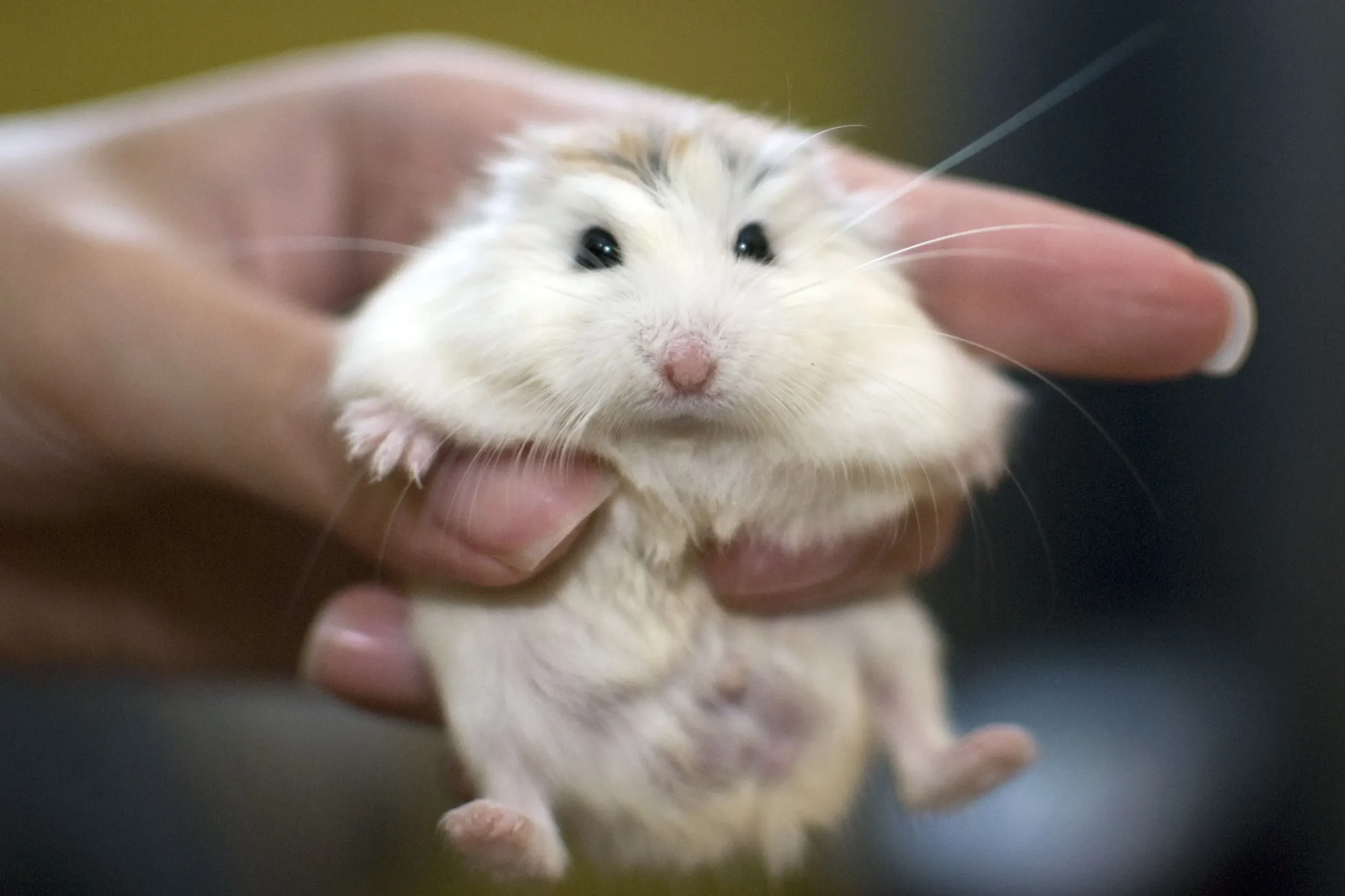
The Roborovski Hamster is a small, short-haired rodent with a long tail, that is native to Mongolia and China, but it can be found in other parts of Asia as well as Europe and North America. It has a thin, elongated body and short legs. It has a rounded head, large eyes and ears, and small feet. The Roborovski Hamster is also known as the Desert Hamster.
Roborovski hamsters are the smallest and fastest of the dwarf hamster breeds, known for their energetic and curious nature. Their sandy brown fur and white bellies make them easily recognizable. Roborovskis are nocturnal creatures, which means they are most active during the night. Although they are not as easy to handle due to their speed and agility, they can be fascinating to watch as they explore and play in their habitat. Roborovski hamsters are a delightful choice for pet owners who enjoy observing their pets’ lively antics and can provide a safe and enriching environment for them to thrive.
Behavior
Roborovski hamsters are the smallest and fastest of the hamster breeds. They’re generally friendly and non-aggressive, but their speed and agility make them difficult to handle. They’re also mostly active during the night and early morning, making them nocturnal beings. The Roborovski’s also require a secure and spacious enclosure with plenty of opportunities for physical and mental stimulation.
Diet & Feeding Requirements
They prefer eating seeds and grains like millet or wheat, but they also love to eat insects like crickets, grasshoppers, beetles and mealworms! If you want to give your robo a treat he will love, try feeding him some sunflower seeds!
Health
Roborovski hamsters are generally healthy pets, but they can still experience some health issues. Common concerns include overgrown teeth, which may require regular trimming, and respiratory infections. They may also develop skin issues, such as mites or allergies, if their environment is not kept clean and well-maintained.
Suitability Around Kids
Due to their small size and quick movements, Roborovski hamsters may not be the best choice for families with young children. They can be challenging to handle and may cause frustration for your kids.
Ease of Ownership
Roborovski hamsters require a secure and spacious cage with ample opportunities for exercise and exploration. Their care is similar to other hamster breeds, but their speed and agility may make handling and interaction more challenging.
The Roborovski hamsters got a 6/10 rating because while they are friendly and non-aggressive, their small size and quick movements make them difficult to handle, especially for families with young children, and most especially if said family are first-time owners.
#5 – Chinese Hamster
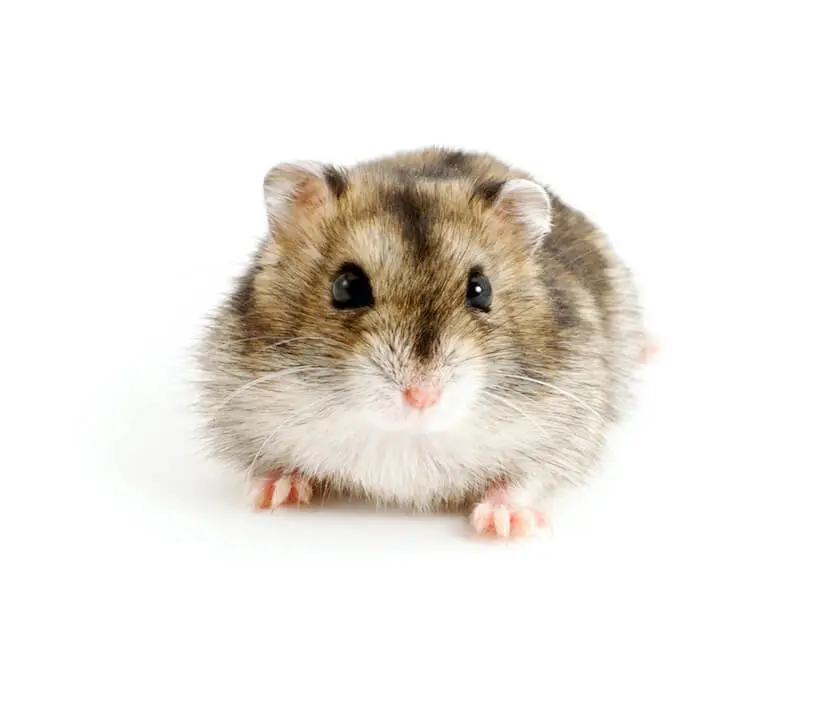
The Chinese hamster is native to China. It is one of the most popular pet rodents, and it can be found in many places around the world. They have a lifespan of about 2 years. At birth, they weigh less than 1 gram and are only 11 millimeters long. Their coat color varies from brownish-gray to yellowish-brown, with a white belly marked with dark stripes along the sides of their body.
Behavior
Chinese hamsters are generally solitary and prefer living alone. They are usually shy and timid but can become friendly and affectionate with their human owners/friends over time.
Feeding Requirements
The Chinese hamster eats both plants and insects, including crickets and mealworms. It also likes to eat fruits, vegetables, and seeds. They are not picky eaters; they will eat just about anything!
Health
Chinese hamsters can face health issues during their lifespan. Some common health problems include wet tail, which is a condition that can cause diarrhea, lethargy, loss of appetite, and a ruffled coat. Chinese hamsters are also to eye problems, such as cataracts or blindness, usually as they age. Monitor your hamster’s health and seek veterinary care if you notice any signs of illness.
Suitability Around Kids
Chinese hamsters are suitable for families with older children who can handle them gently and patiently. Their timid nature may not be ideal for young kids who may unintentionally scare them.
Ease of Ownership
Chinese hamsters require similar care to other hamster breeds, but their shy nature may make interaction and bonding more challenging.
Rating: 6/10
We gave the Chinese hamsters a 6/10 rating due to their shy and timid nature. While they can become friendly and affectionate with their human caretakers, their timidness may not be ideal for families with young children.
Other Hamster Breeds
The top 5 hamster breeds we covered above earned their place in the top 5 list due to their life-span, overall good health, and ease of ownership. We will now explore other less popular hamster breeds that you may catch your fancy:
#6 – European Hamster
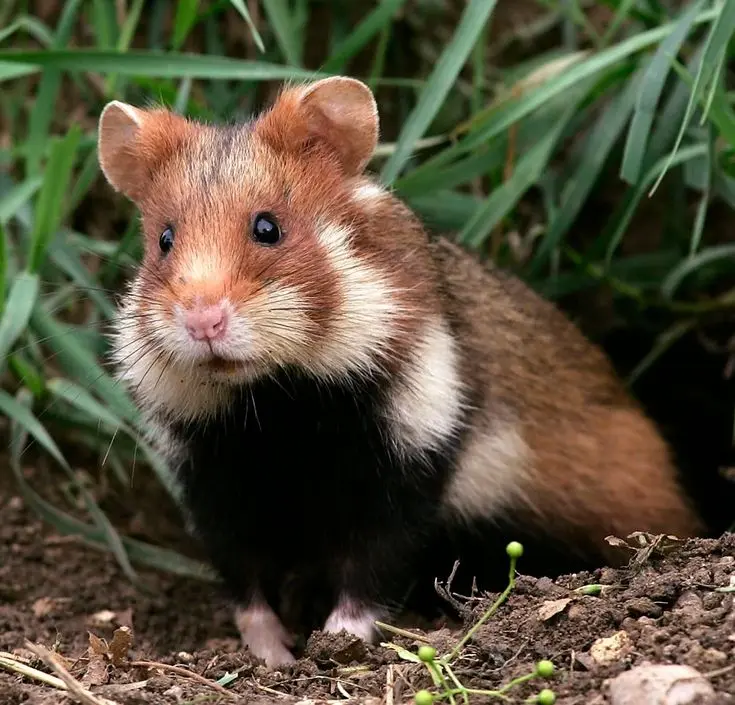
Behavior
European hamsters are solitary animals and can be quite territorial. They have a reputation for being more aggressive than other hamster species, making them less suitable as pets.
Diet/Feeding Requirements
European hamsters have a diverse diet that includes seeds, legumes, root vegetables, grasses, and insects. They transport food in their elastic cheek pouches to store it in food storage chambers, which can contain an average of 2-3 kg (4.4-6.6 lb) of food, and exceptionally up to 65 kg (143 lb).
Health
European hamsters are generally healthy animals, but their health can be affected by their diet and living conditions. A nutritionally poor diet, such as one consisting only of corn or wheat, can cause health issues. Maintaining a clean and safe environment is essential for their well-being.
Suitability Around Kids
Due to their aggressive nature, European hamsters may not be suitable for families with children.
Ease of Ownership
Caring for a European hamster may be more challenging than other hamster species due to their aggressive behavior and specific care requirements.
Rating: 4/10
#7 – Turkish Hamster
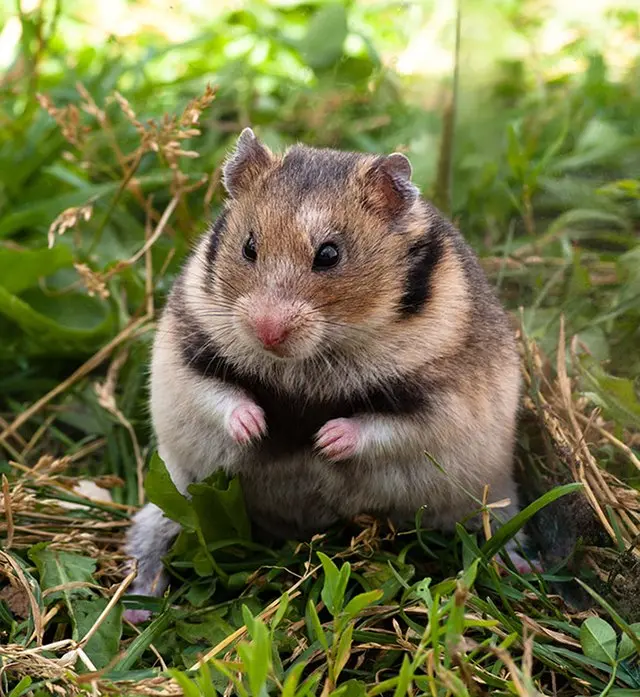
Behavior
Turkish hamsters are solitary animals and can be territorial. They are generally shy and may be more difficult to handle than other hamster species.
Dietry Requirements
Turkish hamsters, also known as Brandt’s hamsters, should have a strict diet consisting primarily of seeds, cereals, insect larvae, and larger insects such as crickets. In the wild, they naturally eat a mixture of seeds and cereals, supplemented with insects for protein. If you’re looking to create a balanced diet for your Turkish hamster, offer them a mixture of seeds, cereals, and insects — similar to their natural diet.
Health
While there is limited information specifically on the health of Turkish hamsters, these hamsters in general may experience health issues such as diarrhea, lethargy, loss of appetite, and a ruffled coat. To proect the health of your Turkish hamster, be sure to provide a balanced diet, a clean living environment, and proper care for them.
Suitability Around Kids
Turkish hamsters are known to be more aggressive than other members of the Cricetidae family. While there isn’t specific information about Turkish hamsters and how they behave around kids, the wise thing to do would be to consider their temperament and your child’s age and ability to handle pets responsibly. For instance, your kids should always have adult supervision when handling hamsters to protect both the child and the pet. Small children often tend to love these little critters just a little too much and can squeeze too tightly, forcing them to retaliate.
Ease of Ownership
Caring for a Turkish hamster may be more challenging than other hamster species due to their aggressive nature and limited domestication.
#8 – Greater Long-tailed Hamster

Behavior
Greater Long-tailed Hamsters exhibit aggressive behavior and are usually territorial, with males showing high aggression during both the breeding and non-breeding seasons. Females mainly display aggression during the non-breeding season. These hamsters are nocturnal in nature, which means they’re more active at night.
Dietry Requirements
Turkish hamsters, also known as Brandt’s hamsters, should have a strict diet consisting primarily of seeds, cereals, insect larvae, and larger insects such as crickets. In the wild, they naturally eat a mixture of seeds and cereals, supplemented with insects for protein. If you’re looking to create a balanced diet for your Turkish hamster, offer them a mixture of seeds, cereals, and insects — similar to their natural diet.
Health
Greater Long-tailed hamsters are generally healthy but can be prone to common hamster ailments. Regular vet visits and proper care can help maintain their health.
Suitability Around Kids
Greater Long-tailed hamsters may not be suitable for families with young children due to their active nature and potential difficulty in handling.
Ease of Ownership
Caring for a Greater Long-tailed hamster may be more challenging than other hamster species due to their active behavior and specific care requirements.
Rating: 5/10
#9 – Romanian Hamster
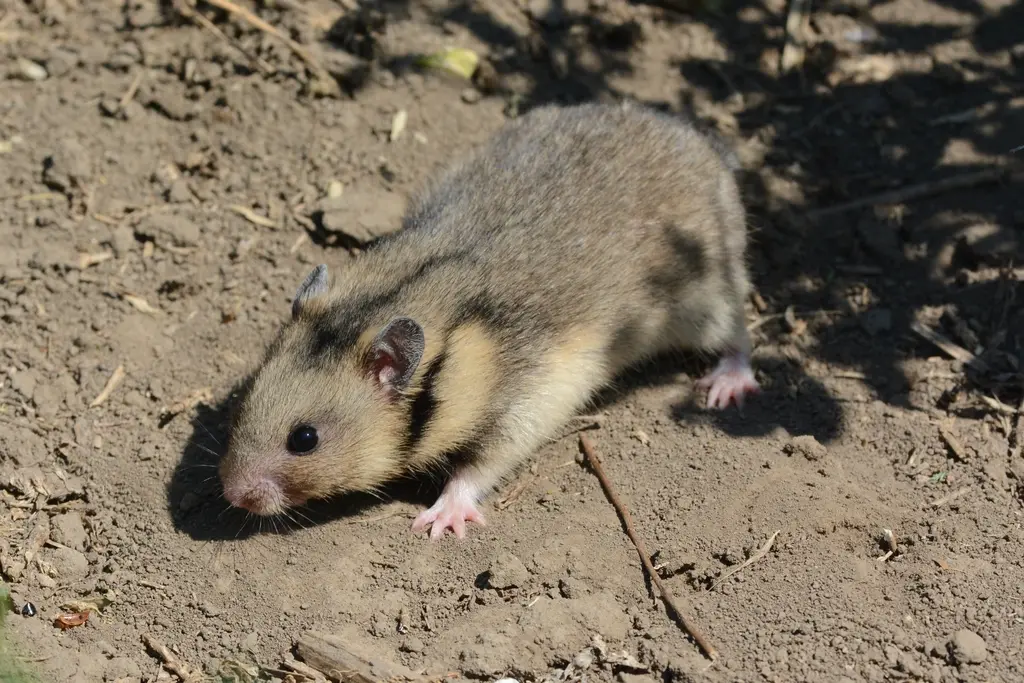
Behavior
Romanian hamsters, also known as Dobrudja hamsters (Mesocricetus newtoni), are nocturnal or crepuscular species. They live solitarily in complex burrow systems.
Feeding Requirements
Romanian hamsters primarily eat seeds, legumes, rooted vegetables, and grasses.
Health
Specific health information on Romanian hamsters is limited. However, applying the general care knowledge for hamsters and strictly adhering to their natural diet will see your Romanian hamster live a long and happy life. Also make sure their surroundings are neat at all times.
Suitability Around Kids
Romanian hamsters may not be suitable for families with young children due to their active nature and potential difficulty in handling.
Ease of Ownership
Caring for a Romanian hamster may be more challenging than other hamster species due to their active behavior and specific care requirements.
Rating: 5/10
Conclusion
In conclusion, choosing the right hamster breed is important when introducing a new pet to your home, as each breed has its unique characteristics, size, temperament, and care requirements. When deciding on the best breed for you, consider factors such as your living space, available time for care and interaction, and personal preferences.
From the friendly and easily tamed Syrian hamster to the sociable and active Winter White Dwarf Hamster, there is a breed suited for every pet owner. Remember to research your chosen breed thoroughly, understand their specific needs, and provide a loving and nurturing environment for your new pet.
With patience, love, and proper care, you and your hamster will build a strong bond and create lasting memories together. Happy hamster-keeping!
![Looking To Get A Hamster? Here Are The Best Breeds [Ranked]](https://animajestic.com/wp-content/uploads/golden-hamster.webp)